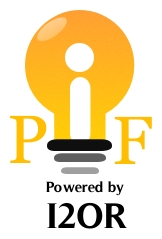UTILIZATION OF EXOPHYTIC AND ENDOPHYTIC MICROBES IN CONTROLLING ALTERNARIA FRUIT ROT OF APPLE (Malus domestica Borkh)
Abstract
Apple rot disease caused by Alternaria sp. is a postharvest disease that is often found when fruit is marketed, transported and stored. The results showed that there were 45 isolates of exophytic microbes and 27 isolates of endophytes. The microbial diversity index of healthy apple exophytes is 1.249, this means that the condition of the commodity structure is quite stable with a medium category and a scale of 3, while the dominance index is 0.896, meaning that there are 10 isolates of the dominating species, namely Lasiodiplodia theobromae. With a evenness index of 0.885. The endophytic microbial diversity index in healthy apples was 2.793, which means the condition of the commodity structure was more stable with a good category and a scale of 4. The Simpson dominance index was 0.739, meaning that there was a dominant species, namely Rhizopus sp. as many as 23 isolates, with a evenness index value of 0.458. The inhibition of exophytic and endophytic microbes against pathogens in vitro showed that the highest inhibition of exophytic microbes was Actinomyces bovis (Actinomycetes), A. niger, Colletotrichum sp., and Rhizopus sp. each of 83.33±00%, while the highest endophyte was shown by L. theobromae at 83.33±00%, followed by the fungus Rhizopus sp. by 80.55±5.89% and the smallest by the fungus A. niger by 78.89±4.19%. In vivo inhibition of exophytic and endophytic microbes against pathogens showed that their effect was very significant in suppressing pathogen growth in fresh fruit. The effect of treatment C (A. niger) was very good in suppressing the growth of pathogens, so that the apples still looked smooth and fresh, different from treatments A (L. theobromae) and K+P (treatment with pathogens).
Downloads
References
Endrawati, D. dan E. Kusumaningtyas. 2017. Beberapa fungsi Rhizopus sp. dalam meningkatkan nilai nutrisi bahan pakan. Jurnal Wartazoa 27(2): 081-088 (Indonesian
language)
Fendiyanto M.H, and R.D. Satrio. 2020. Identification, aflatoxin content, and antagonistic test of spoilage fungi in bread to Aspergillus niger. Bioteknologi 17: 60-66.
Gauther N.W. 2019. Fruit Diseases of Apple. College of Agriculture, Food and Environment. Cooperative Extension Service. University of Kentucky.
Gelain J., N.A. Hamada, and L.L. May de Mio. 2020. Survival of pathogens after dormancy in apple tree twigs indicates potential risk as source of inoculum. Acta Scientiarum 44: 1-11.
Godani K. 2022. Types of Diversity Indices of Biodiversity. https://www.biologydiscussion.com/biodiversity/types/2-types-of-diversity-indices-ofbiodiversity/8388. Accessed 7/5/2022.
Goswami S., N. Goel1, and R.S. Majumdar. 2021. Phylloplane microbes impact host physiology: a review. Journal of Plant Protection Research 61(3): 213-221.
Gur L., M. Reuveni and Y. Cohen. 2021. Β-Aminobutyric acid induced resistance against Alternaria fruit rot in apple fruits. Journal of Fungi 7: 1-13.
Indrawati. G., R.A. Samson, K. Van den Tweel-Vermeulen, A. Oetari dan I. Santoso. 1999. Pengenalan Kapang Tropik Umum. Yayasan Obor Indonesia. Universitas Indonesia (University of Indonsia Culture Collection) Depok, Indonsia dan Centraalbureau voor Schirmmelcultures, Baarn, The Netherlands.
Lee JM, WS Tan, and ASY Ting. 2014. Revealing the antimicrobial and enzymatic potentials of culturable fungal endophytes from tropical pitcher plants (Nepenthes spp.).
Mycosphere 5(2): 364-377.
Li Y., P.M. Hirst, Y. Wan, Y. Liu, Q. Zhou, H. Gao, Y. Guo, Z. Zhao, L. Wang and M. Han. 2012. Resistance to Marssonina coronaria and Alternaria alternata Apple Pathotype in the Major Apple Cultivars and Rootstocks Used in China. Hortscience 47(9):1241–1244.
Madhu G.S., Sajad Un Nabi, J.I. Mir, W. H. Raja, M. A Sheikh, O.C. Sharma and D.B.Singh. 2020. Alternaria leaf and fruit spot in apple: Symptoms, cause and management. European Journal of Biotechnology and Bioscience 8(3): 24-26.
Miyadoh, S. 1997. Atlas of Actinomycetes. Asakura Publishing Co Ltd. Japan. Moensaku, E., Y. Sine and L. Pardosi. 2021. Isolasi dan identifikasi kapang Rhizopus pada
tempe kacang merh (Phaseulus vulgaris L.). Jurnal Pendidikan Biologi Undiksha 8(2): 61-69 (Indonesian language).
Odum, E.P. 1971. Fundamentals of Ecology. Third Edition. W.B. Saunders Company.Philadelphia, Toronto, London. Toppan Company, Ltd. Tokyo, Japan. Pitt, J.I. and A.D. Hocking. 1997. Fungi and Food Spoilage. Blackie Avademic and Professional. Second Edition. London-Weinhein-New York-Tokyo-Melboune-Madras
Samson, R.A., E.S. Hoekstra, and C. A.N. Van Oorschot. 1981. Introduction to Food-Borne Fungi. Centraalbureau Voor-Schimmelcultures. Institute of The Royal Netherlands.
Academic of Arts and Sciences.
Sriherwanto, C., I. Sujadi dan S. Soraya.2017. Pemanfaatan kapang Rhizopus sp. sebagai agen hayati pengapung pakan. Jurnal Mikologi Indonesia 1(2), 70-81 (Indonesian language).
Sudarma I M., N.W.Suniti, N.N. Darmiati and I G.N. Bagus. 2018. The Diversity of Exophytic Fungus in Sugar-Apple Plant and their Inhibition Ability on Lasiodiplodia theobromae (Cause of Srikaya Fruit Rot) In Vitro. Int. J. Curr. Res. Biosci. Plant Biol. 5(10), 32-38.
Sudarma I M., N.W. Suniti and N.N. Darmiati.2019. Exophytic and Endophytic Fungus that Potential as Biocontrol Agents on Lasiodiplodia theobromae caused Fruit Rot at SugarApple. Int.J.Curr.Microbiol.App.Sci 8(2): 131-142.
Sudarma I M., N. N, Darmiati and N. W. Suniti. 2021a, Utilization Exophytic and Endophytic Fungi to Control Banana Fruit Rot (Lasiodiplodia theobromae). IOSR Journal of
Agriculture and Veterinary Science (IOSR-JAVS) 14(10): 18-25.
Sudarma I M., N.N. Darmiati and N.W. Suniti. 2021b. Control of Papaya Rot Disease by Using Exophytic and Endophytic Fungi Which is Environmentally Friendly. Int.J.Curr.Microbiol.App.Sci 10(09): 600-612.
Copyright (c) 2022 I Made Sudarma, Ni Wayan Suniti and Ni Nengah Darmiati

This work is licensed under a Creative Commons Attribution-NonCommercial-NoDerivatives 4.0 International License.
Author(s) and co-author(s) jointly and severally represent and warrant that the Article is original with the author(s) and does not infringe any copyright or violate any other right of any third parties, and that the Article has not been published elsewhere. Author(s) agree to the terms that the GPH Journal will have the full right to remove the published article on any misconduct found in the published article.


























